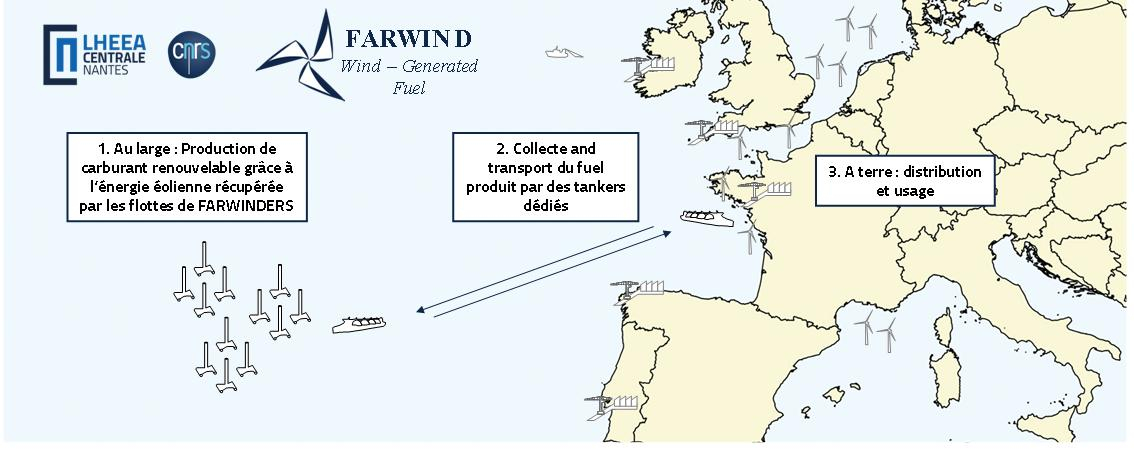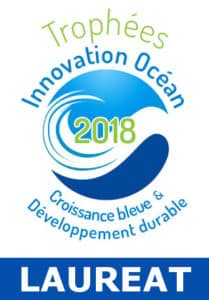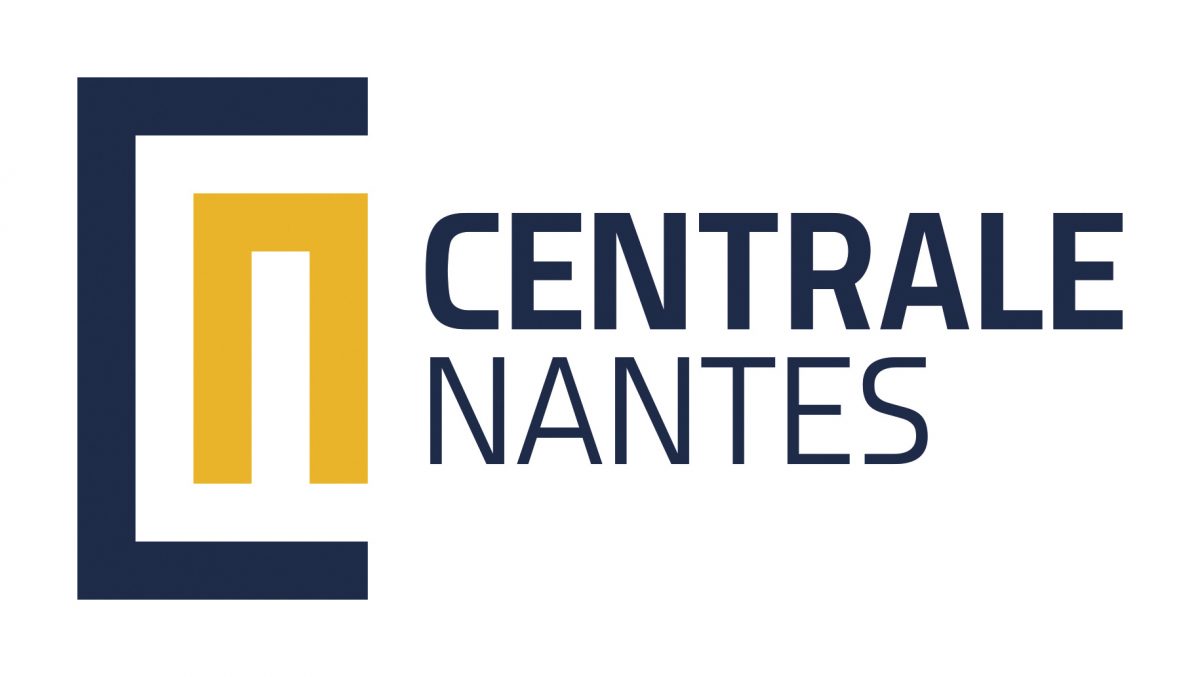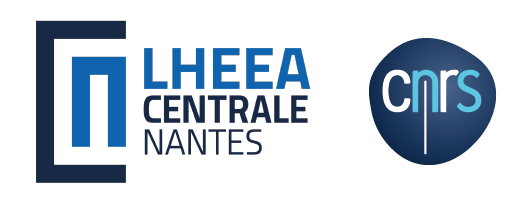
Background
The FARWIND project explores the potential of hydro-wind turbine ships (FARWINDER) for the production of renewable fuel from from far offshore wind resources. This technology is complete floating and bottom fixed offshore wind turbines that can’t exploit far offshore resources (> 100 km) due to the high costs of connection and anchoring.
The FARWINDER concept developed by Centrale Nantes is made up of a wind-powered vessel with modern sails (rigid wings or Flettner rotors). Under the ship is installed a tidal turbine. The current-speed is thus transformed into electricity by the tidal turbine.
Thanks to an on-board chemical plant, this electricity is used to turn water into a renewable fuel. The renewable fuel may be methanol, ammonia (Haber-Bosch process) or synthetic gasoline (Fischer-Tropsch process). On land, these renewable fuel production processes are now quite well mastered with TRLs ranging from 5 to 8 depending on the sectors.
The fuel produced is collected by carriers and then transported to ports for sale.
Scientific advances and innovation
A peculiarity of this concept is that FARWINDER’s fleets are mobile. This optimizes the energy performance by meteorological routing. This “quest for wind” achieves a load factor of about 80%, which is 4 times higher than wind turbines on land. This high load factor is a key aspect of economic viability.
Another peculiarity is that the FARWINDERS are drones, without personnel on board, which constitutes a second aspect of economic viability. For security reasons, the fleets will be accompanied by a surveillance vessel. This surveillance vessel will also be the tanker that will collect the fuel when the FARWINDER tanks are full.
This project won the 2018 edition of the Trophées de l’Innovation Océan.

Expected technical and economic impact
FARWIND technology produces renewable fuel. In the long term, the potential customers are energy companies and majors of the oil industry engaged in a process to respect the Paris agreements to limit global warming to 2 ° C.
Indeed, the substitution of fossil fuels with renewable fuels would neutralize emissions from this sector. The market is obviously gigantic, is it necessary to remember that the oil industry is among the biggest industries in the world?
Compared to the United Nations criteria for sustainable development, FARWIND technology would meet the following sustainable development goals: clean energy and affordable cost.
(SDG 7), decent work and economic growth (SDG 8), industry, innovation and infrastructure
(SDG 9), measures to combat climate change (SDG 13), partnerships for achieving the goals (SDG 17). Human society in general will therefore be a major beneficiary of innovation.
The coastal regions including the Pays de la Loire region will also be the main beneficiaries of innovation since this new high-tech sector will be a source of employment. For France and Europe, this FARWIND concept will promote strategic energy security as fuel production would be less dependent on hydrocarbon imports.
In conclusion, this system constitutes a breaking innovation source of blue growth while addressing the problem of climate change. This innovation also contributes to the economic and geopolitical strategies of the littoral regions, France and Europe
Key project milestones
- 2017 - Sart
- 2020 - End







